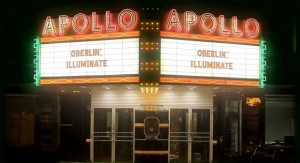“Illuminating” the legacy concept in higher education
19 October 2012 – Adina Langer
In this election cycle, like just about every previous election cycle of recent memory, the role of higher education in improving society has been raised and debated. The past sixty years have seen unprecedented growth in the higher education sector, with a proliferation of for-profit and distance-learning options supplementing established research universities, liberal arts colleges, and community college programs. (For a more comprehensive, but not exhaustive, look at the history of higher education, see John Thelin’s A History of American Higher Education).
This growth, coupled with an ever-increasing pool of student applicants, has created a situation in which institutions of higher learning must distinguish themselves from each other in order to attract qualified students, and “alma maters” must compete with other deserving charities for the discretionary spending of alumni in order to maintain and improve programs to sustain this high level of competition. The result is the advent of a highly sophisticated marketing program! But what can a particular institution of higher learning market beyond widely available and sometimes stultifying statistics? The answer is something very familiar to public historians and historic preservationists: heritage.
In recent months, my research interests have brought me back to my own alma mater, Oberlin College. Specifically, I am developing a project to explore the history and significance of Oberlin’s Experimental College, one of many founded in the late 1960s, but one of the only ones to survive as a student-run organization to the present day. In September, when I visited the campus for some concentrated time in the archives, I found myself in the company of numerous alumni in town for a highly targeted celebration of Oberlin’s larger legacy, the kick-off of the “Oberlin Illuminate” fundraising campaign.
It’s easy to think of fundraising as a perpetual state of affairs for institutions of higher learning, an almost a-historical activity within colleges and universities, but fundraising both has a history and uses history as an effective tool. When I was on campus, the College Archives had put together an exhibit in the library of at least five decades of historical fundraising ephemera. Common themes through the years included attempts to link donors with the stories of particular students, and the celebration of capital campaigns to build new academic buildings. But Oberlin Illuminate offers something new and of particular interest to the public history profession: an impressionistic video, linking historic imagery, both moving and still, with scenes from contemporary life on campus.
This video has a lot in common with other technological trends that link the present and the past, such as Lookback Maps or Flickr’s Looking into the Past group. What makes this method of seamlessly combining historic and contemporary imagery so effective is the way it makes history ambient. It strips particular imagery of its original context and overlays the creator’s intentions. In the case of the Illuminate video, these intentions are to reify the notion of legacy in the College’s fundraising goals. Today’s students are seamlessly connected with the students of the past, and you, by virtue of your financial contribution, can ensure that legacy continues into the future.
The thrill of linking with a kindred past provides the hook for people to choose to support a particular institution, and the technology of the well-crafted fundraising video provides a platform that makes that continuation of legacy look like an awful lot of fun. But it’s worth asking, how does this flattening of the past into a series of impressionistic images run counter to the essential mission of liberal arts education as an engine of critical thinking? Do we require a familiar structure before we are willing to embrace challenges and solve problems? Public history, like higher education, walks the fine line between comforting and challenging its audience. As we strive to strike this balance elegantly and provocatively, it’s probably worth our time to consider the successes and failures of our colleagues in non-profit and higher education marketing.
– Adina Langer, Artiflection, LLC




